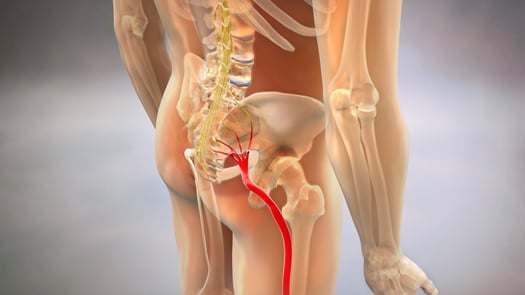
Leg pain related to nerve irritation or compression is one of the more serious symptoms associated with sciatica. If mobility issues result in your doctor recommending a microdiscectomy (which is a less invasive form of a traditional discectomy), you may be concerned your sciatica could return after the procedure. This article discusses whether sciatica can return after having spinal disc surgery.
There May Be Lingering Nerve Pain
After a microdiscectomy, it takes time for the sciatic nerve to heal even after the nerve has been freed from herniated disc pressure. This is perfectly normal. While temporary or lingering sciatic nerve pain may seem like sciatica has returned, this is due to the pressure placed on the nerve. It can last a bit longer if you had sciatica for a while before having surgery.
Poor Posture Could Be an Issue
If you are not mindful of your posture, another spinal disc may become herniated. It is also possible for inflammation from poor posture habits to cause sciatica to return post-surgery. Reduce this risk by being mindful of how you sit, stand, and sleep after having microdiscectomy surgery. This means taking steps such as:
• Not sitting for long periods of time
• Not slouching when you sit
• Sleeping on a supportive mattress
• Standing up straight with your shoulders back
• Sitting in a supportive chair when you work—preferably one designed with spine support in mind
It Is Possible Not Enough Disc Material Was Removed
If more disc material needs to be removed, you may notice a return of sciatica symptoms due to the affected spinal disc shifting. In this instance, you may benefit from conservative treatments such as physical therapy, medication, and massage therapy. Applying heat and cold to the affected area can be beneficial as well.
Another Disc May Become Herniated
It is also possible for another spinal disc within the same area to become herniated at some point. If the disc is near the sciatic nerve, you may experience a return of symptoms similar to what you experienced prior to surgery. This does not mean your surgery was a failure. It means another disc has become herniated in the same general area. Again, you do not necessarily need another microdiscectomy if this happens. Each occurrence of sciatica is treated as if it is the first incidence of sciatic nerve pain.
Surgery Did Not Correctly Address the Source of the Sciatica
In rare instances, microdiscectomy surgery may not treat the actual source of sciatic nerve irritation. For example, nearby muscles may become inflamed enough to irritate the sciatic nerve. In this case, treatment often involves hot and cold applications and medication. You may also benefit from a personalized physical therapy plan.
You may also notice a temporary return of sciatica symptoms if you push yourself too much when exercising or playing sports, which could irritate nearby muscles. Rest and hot and cold applications can often alleviate sciatica in these instances.
Patients who have had microdiscectomies for herniated discs may experience sciatica if their discs reherniate, which often occurs if there is a large hole in the outer ring of the disc after surgery. Fortunately, there is a new treatment available. Barricaid is a device shown to reduce the risk of reherniation by closing the hole in the disc after a discectomy, and 95 percent of Barricaid patients did not undergo a reoperation due to reherniation in a 2-year study timeframe. This treatment is done immediately following the discectomy—during the same operation—and does not require any additional incisions or time in the hospital.
To learn more about the Barricaid treatment, ask your doctor or contact us at 844-288-7474.
For full benefit/risk information, please visit: https://www.barricaid.com/instructions.


Comments